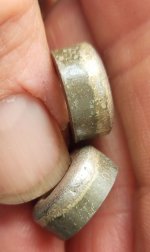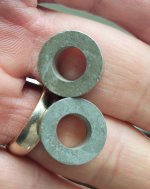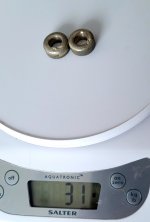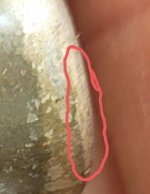- Feb 3, 2009
- 41,142
- 157,049
- 🥇 Banner finds
- 1
- Detector(s) used
- Deus, Deus 2, Minelab 3030, E-Trac,
- Primary Interest:
- Relic Hunting
I've never been able to find the answer to these contacts.
Bought while running the scrap company 20yrs probably now.
Couldn't sell as the two metal were together and never tried beyond heating up to cherry red to separate.
It didn't work.
Carbide with silver over the one end.
Originally I was told that the item was an electrical contact.
Weight 15.5grams
16mmx5mm
If anyone has any ideas please let me know on what they are from originally or maker.
If anyone has any ideas on how to separate the two metals so I can then have a product to sell.
Thanks for looking.
I have 75-80lbs (Will/have been eating lunch on this one)



Bought while running the scrap company 20yrs probably now.
Couldn't sell as the two metal were together and never tried beyond heating up to cherry red to separate.
It didn't work.
Carbide with silver over the one end.
Originally I was told that the item was an electrical contact.
Weight 15.5grams
16mmx5mm
If anyone has any ideas please let me know on what they are from originally or maker.
If anyone has any ideas on how to separate the two metals so I can then have a product to sell.
Thanks for looking.
I have 75-80lbs (Will/have been eating lunch on this one)









